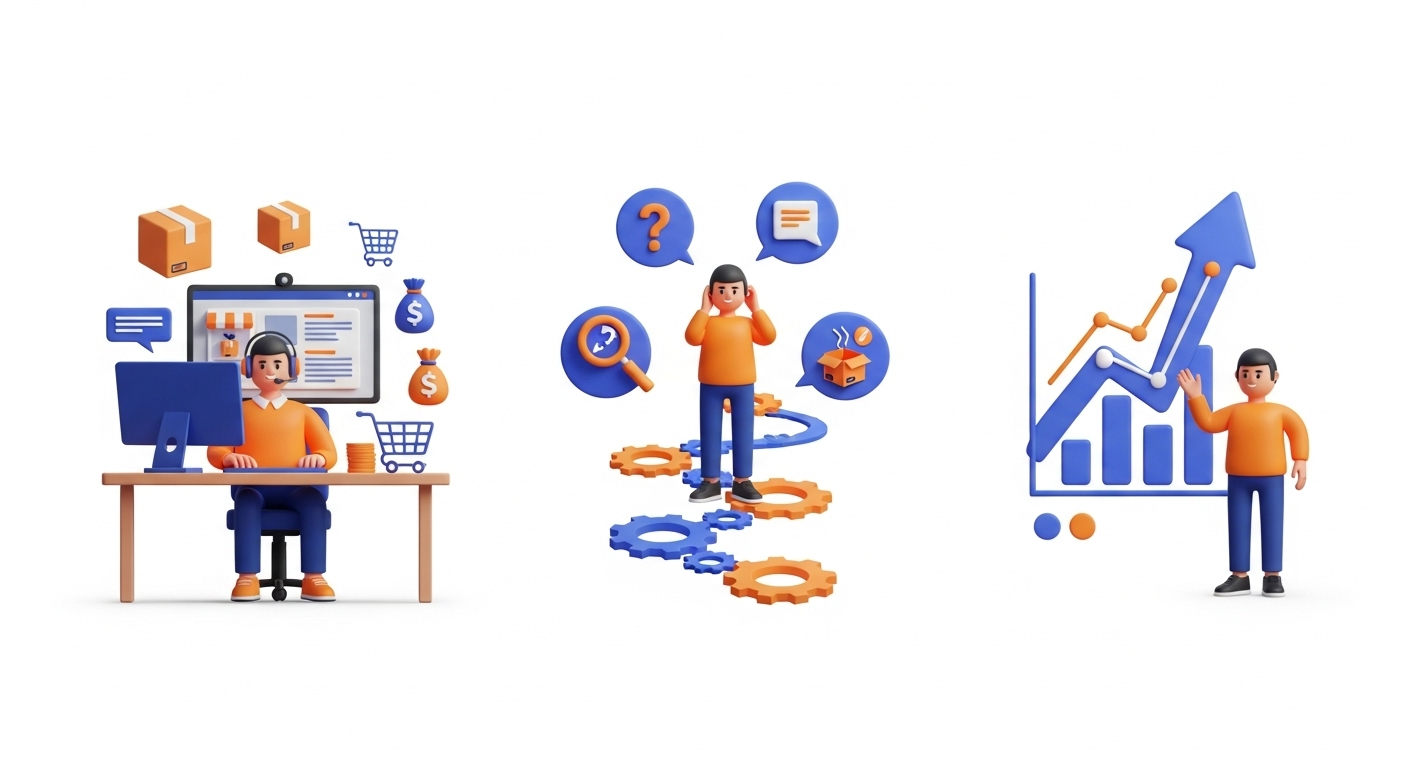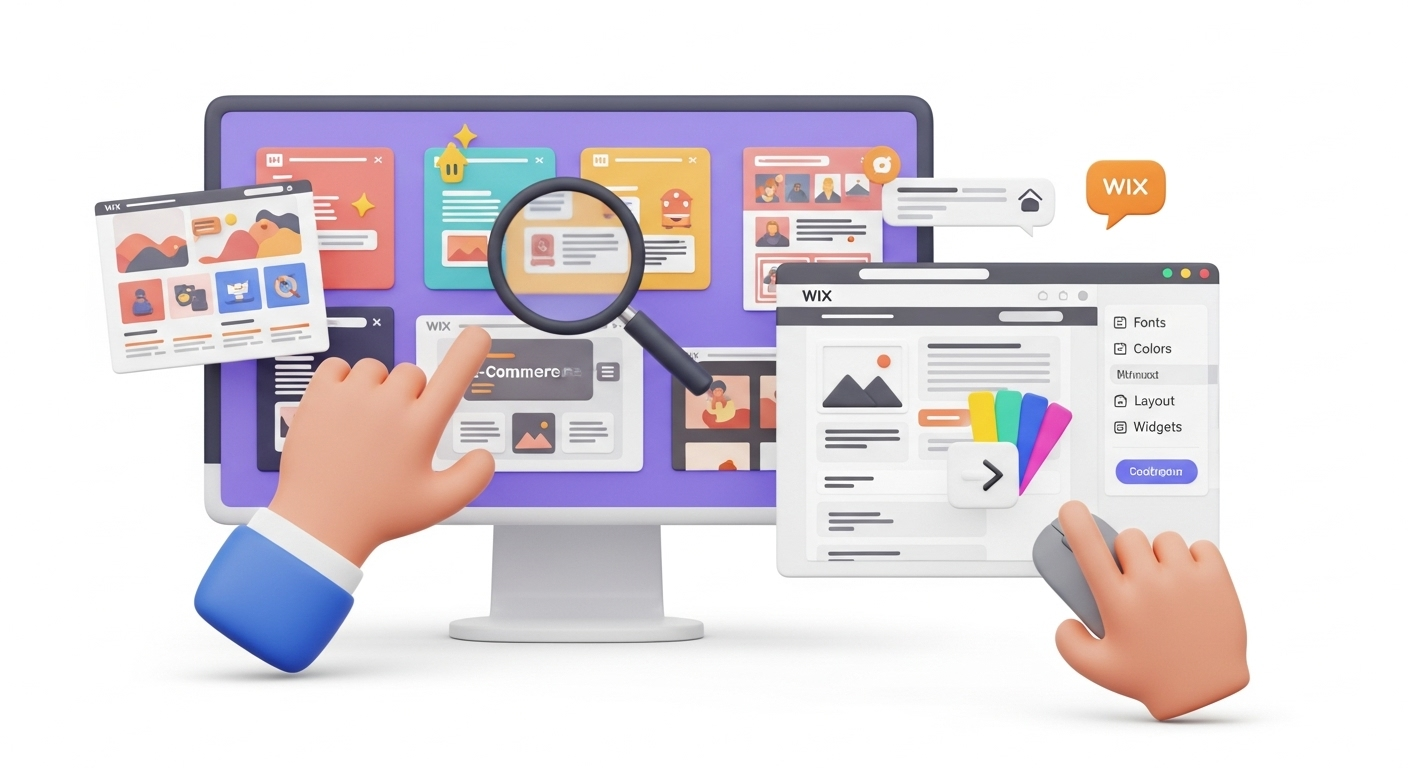If you're running a Shopify store or planning to migrate to Shopify from another platform like WooCommerce, Magento, or PrestaShop, one of your top concerns should be this when thinking about SEO for Shopify migration:
⚠️ How do I optimize my store for SEO — and protect my rankings during migration?
Search engine visibility is vital for long-term growth, and Shopify has both strengths and limitations when it comes to SEO. This 2025 technical SEO guide for Shopify will help you with essential Shopify SEO optimization tactics:
- Optimize your new store for organic traffic
- Avoid common SEO pitfalls
- Understand how to protect rankings during migration
- Implement long-term search-friendly strategies
Let’s dive in.
Why SEO Still Matters in 2025 (Even More Than Before)
- Over 50% of all website traffic comes from organic search
- Google is shifting to AI-powered search and SGE (Search Generative Experience) — meaning your store's structure, speed, and metadata matter more than ever
- Unlike paid ads, SEO brings sustainable, compounding growth
- SEO is crucial for post-migration stability — especially if you're migrating to Shopify from WooCommerce or Magento — to avoid traffic drops and SEO ranking loss.
Whether you're just launching or migrating, SEO is your long-term engine.
Key Technical SEO Areas to Focus on in Shopify
1. Optimize Meta Titles and Descriptions
Go to:
Online Store → Preferences (for homepage)
Product → SEO → Edit website SEO (for individual products)
Best Practices:
- Keep titles under 60 characters, include the main keyword
- Write compelling meta descriptions (~155 characters)
- Avoid duplication across products or collections
Use apps like Smart SEO or SEO Manager for batch editing.
2. Use Clean, Keyword-Rich URLs
Shopify automatically structures URLs. You can’t change default structures like /products/ or /collections/, but you can:
- Optimize slugs (e.g., /products/organic-coffee-beans)
- Avoid stop words ("and", "the", "of")
- Keep it short, descriptive, and lowercase
⚠️ Shopify doesn’t support full URL customization, so plan ahead during migration.
3. Implement 301 Redirects (Crucial for Migration)
If you’re moving from another platform, your URLs will likely change. To preserve your SEO:
- Go to Online Store → Navigation → View URL Redirects
- Manually add redirects or bulk upload via CSV
- Use an app like Easy Redirects or Matrixify for automation
Redirects help you avoid 404 errors, retain backlinks, and prevent traffic loss — a key step in any Shopify SEO migration strategy.
4. Improve Shopify Site Speed
Google considers page load time a ranking factor. Here’s how to speed up your Shopify site:
- Compress images (use TinyIMG or Crush.pics)
- Remove unused apps and scripts
- Minimize homepage content and carousels
- Use fast-loading, responsive themes (e.g., Dawn, Impulse)
- Avoid too many web fonts or oversized hero videos
Check performance with:
- Google PageSpeed Insights
- GTmetrix
5. Leverage Structured Data (Schema Markup)
Shopify doesn't include rich snippets by default. To boost your visibility in Google and improve Shopify SEO performance:
- Use SEO apps that inject schema (like Smart SEO or JSON-LD for SEO)
- Ensure rich snippets for:
- Products (name, price, availability)
- Reviews (aggregate rating)
- Articles (blog posts)
- Products (name, price, availability)
This helps your listings show star ratings, price, and availability in Google.
6. Optimize Images for SEO
Optimizing images is also essential for technical SEO on Shopify. Poor image handling can slow down page speed and hurt your store’s rankings.
Image SEO helps with:
- Google Images traffic
- Page speed
- Accessibility
Checklist:
- Use descriptive filenames (e.g., handcrafted-ceramic-mug.jpg)
- Add alt text for every image (focus on keywords and clarity)
- Compress images before upload (use WebP where possible)
7. Submit Your Sitemap to Google Search Console
Shopify automatically generates a sitemap at:
https://yourstore.com/sitemap.xml
To help Google crawl your site:
- Go to Google Search Console
- Add your Shopify domain
- Submit the sitemap URL
Also check:
- Crawl stats
- Mobile usability
- Page indexing
8. Build Internal Links
Good internal linking:
- Helps Google understand site structure
- Improves user experience
- Distributes page authority
Link from:
- Blog posts → Products/Collections
- Product descriptions → Collections
- Homepage → Featured categories
Use apps like Link Whisper for suggestions.
9. Create SEO-Friendly Content (Yes, Blogging Still Works)
Shopify includes a built-in blog. Use it to:
- Target long-tail keywords
- Attract inbound links
- Educate customers
Example topics:
- How-to guides
- Product comparisons
- FAQs
- Gift guides
Use tools like Ubersuggest, AnswerThePublic, or Semrush to find content ideas.
10. Use Canonical Tags Properly
Shopify automatically adds canonical tags to avoid duplicate content — an important built-in feature for Shopify SEO. However:
- Watch out for filtered collections or tags causing duplicates
- Avoid creating multiple URLs for the same product via navigation paths
If needed, override canonical tags with an SEO app or theme code.
Why Preserving SEO During Migration Matters
Migrating to Shopify without an SEO strategy can result in:
Traffic drops
❌ Lost rankings for high-performing keywords
Broken backlinks (from press or blogs)
Decreased revenue from organic sales
That’s why platforms like Cart2Cart are critical for anyone planning a Shopify SEO migration. With Cart2Cart, you can:
✅ Migrate your products, categories, customers, and orders
✅ Transfer SEO metadata (titles, descriptions)
✅ Preserve URL structure (when possible)
✅ Automatically create 301 redirects
✅ Run a free demo to preview how SEO data will transfer
SEO preservation = faster post-migration recovery + long-term ranking strength.
Supported SEO Migrations with Cart2Cart
- WooCommerce to Shopify
- Magento to Shopify
- PrestaShop to Shopify
- BigCommerce to Shopify
Final Thoughts
In 2025, a Shopify store that ignores SEO — especially during or after migration — will struggle to compete in search and lose organic growth potential.
✅ But by implementing the strategies above — and especially preserving your SEO during a platform migration — you’ll set your store up for long-term visibility and growth.
Don’t treat SEO as an afterthought. Treat it as an investment that pays compounding dividends.
Ready to Migrate to Shopify Without Losing SEO?
Use Cart2Cart to:
- Migrate your store data automatically
- Retain SEO metadata
- Set up redirects
- Test with a free demo
Start your free Shopify SEO-safe migration now and ensure your rankings stay intact.
Monthly Update – December 2025
As 2025 draws to a close, the landscape of e-commerce SEO is increasingly shaped by advancements in AI and the growing importance of user experience. With Google's SGE becoming more prevalent, businesses need to shift their focus beyond traditional keywords to comprehensive topical authority and intent matching. This means creating high-quality, in-depth content that truly answers user queries and provides value, rather than simply stuffing keywords. Emphasize helpfulness, expertise, authoritativeness, and trustworthiness (E-E-A-T) across all your Shopify content, from product descriptions to blog posts. Furthermore, optimizing for Core Web Vitals remains crucial, as fast-loading, interactive sites are favored by both search engines and users. Consider a final audit of your site's performance metrics before the new year to ensure you're well-positioned for the shifts in search algorithms in 2026.
For more details, explore our FAQ section or schedule a call with a migration expert.






